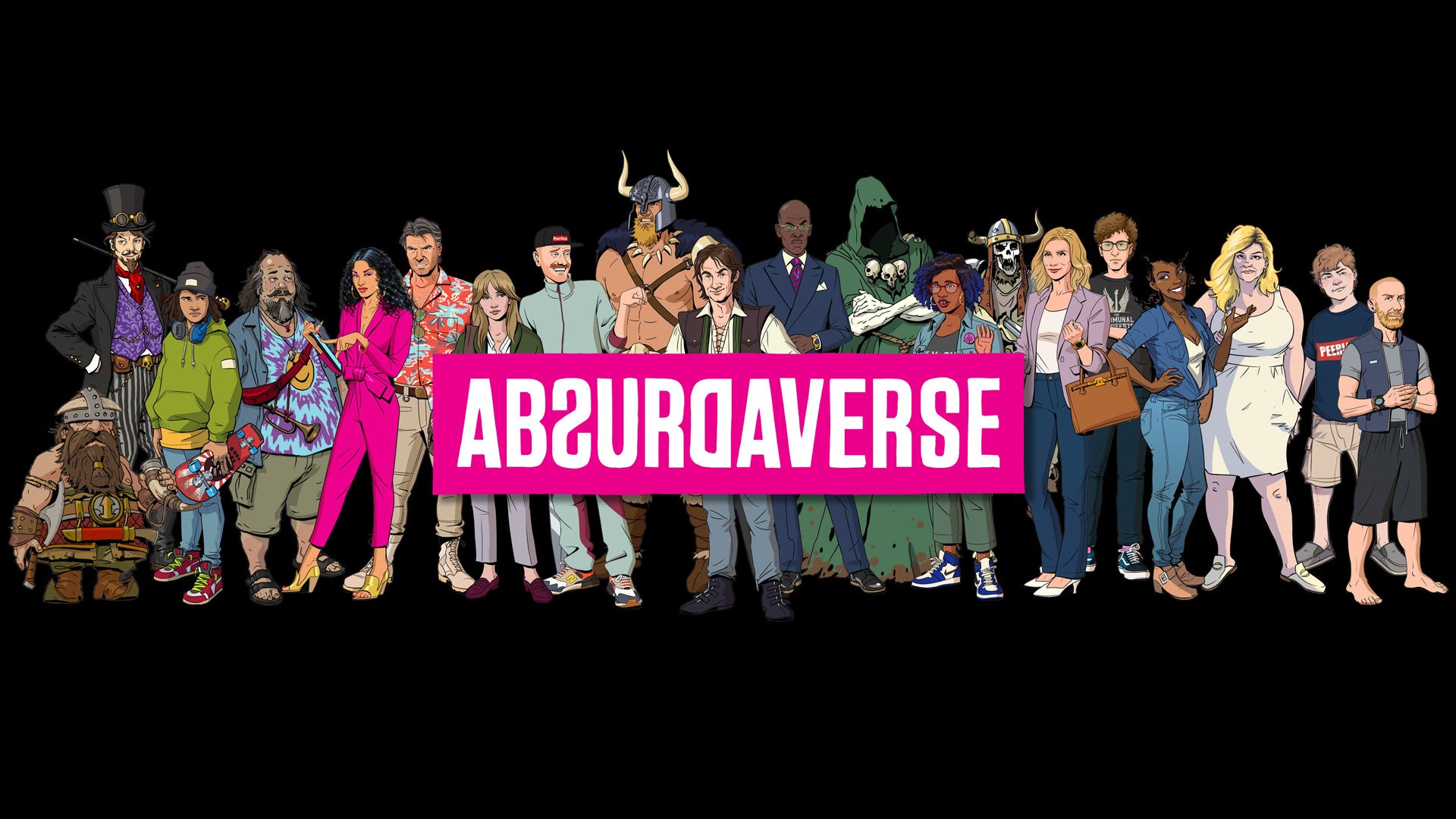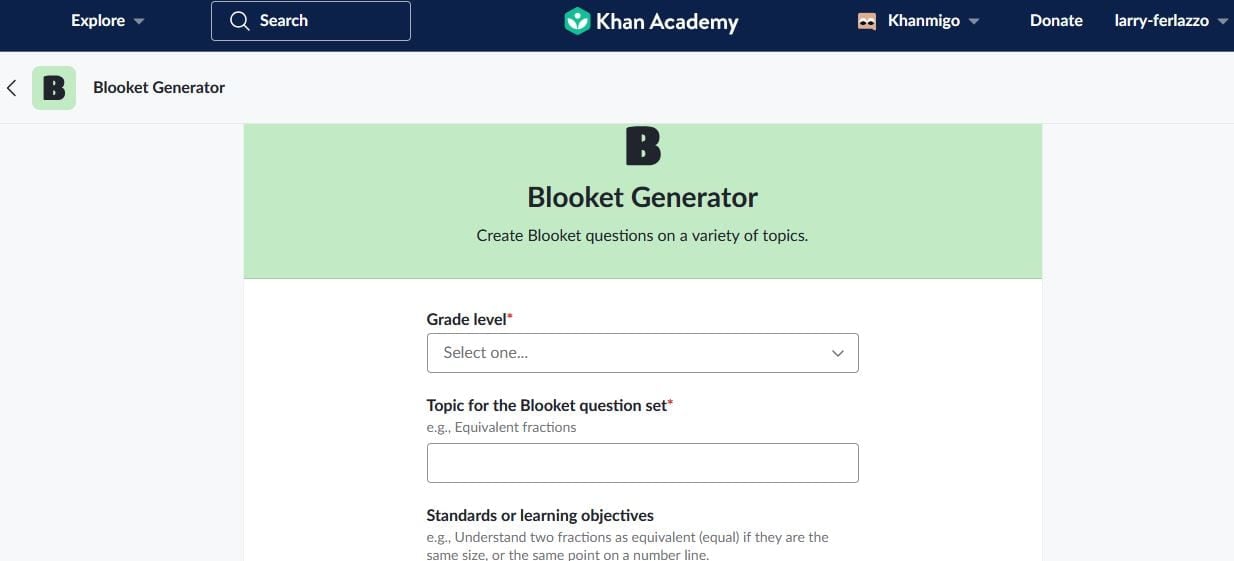Our Beginner’s Guide to Powerlifting Is a Masterclass on Skill and Strength
Here's your primer on lifting maximal loads on the "big three" lifts, the squat, bench press, and deadlift.

At your local gym, you've no doubt seen someone load a barbell with 45-pound plates until the bar was bending, then use brute force and power to lift it off the ground. There's a good chance you won't find this person attempting a pistol squat or cossack squats—let alone boosting their VO2 max or trying the 28-day calisthenics challenge. This is a powerlifter who spends all their time going after the big three—earning personal bests in the squat, bench press, and deadlift.
Unlike bodybuilding, which emphasizes the pursuit of a particular physique, powerlifting is a sport of attaining as much raw strength as humanly possible. Primal in its simplicity, powerlifting ain’t always pretty, nor is it especially glamorous. But it is practical, unquestionably hardcore, and a virtual guarantee you will never again struggle to move your couch.
“To be a powerlifter means being dedicated to a goal: Find out how strong you can get, then get stronger than that,” says Sean Collins, C.S.C.S., a certified USA Powerlifting Club Coach and owner/coach at Murder of Crows Barbell Club in Brooklyn, NY.
Related: How to Get Bigger: 25 Science-Backed Tips to Maximize Muscle Growth
What Is Powerlifting?
“A powerlifter takes three seemingly simple exercises—the deadlift, squat, and bench press—and works to learn and excel in every single aspect of them, since strength is just as much a skill as it is a quantifiable characteristic.”
At face value, powerlifting is pretty simple—develop as much all-out strength as you humanly can, primarily through the “big three” fundamental lifts:
- Low-Bar Back Squat
- Bench Press
- Deadlift
But talk to powerlifters long enough, and you’ll discover they often develop a mystic sense about their training. Like marathon runners and Ironman triathletes, powerlifters operate at the brutal edge of their own physical capability.
That means powerlifting is demanding and extremely taxing, both physically and mentally. There’s no faking it: Just you and a barbell, on a platform, locked in an eternal battle against gravity. And for lifters who want to go beyond merely “exercising” and dedicate themselves to the pursuit of hardcore strength, it’s rewarding—and, ultimately, transformative.
Related: Master the 5x5 Workout to Build Strength, Muscle, and Power
And while powerlifting has a somewhat brutish reputation—powerlifters like to say their sport is just picking things up and putting them down—anyone who’s bench-pressed twice their body weight or deadlifted 500 pounds knows that powerlifting is both a sport of mental fortitude and finesse.
“There’s so much to learn: bracing, rooting, breathing, optimal foot position, bar position, eye gaze, head position, activation,” Collins says. “It’s rewarding to go through the journey of getting strong because you learn so much about your body, and so much about yourself,” Collins says. Getty images/Pekic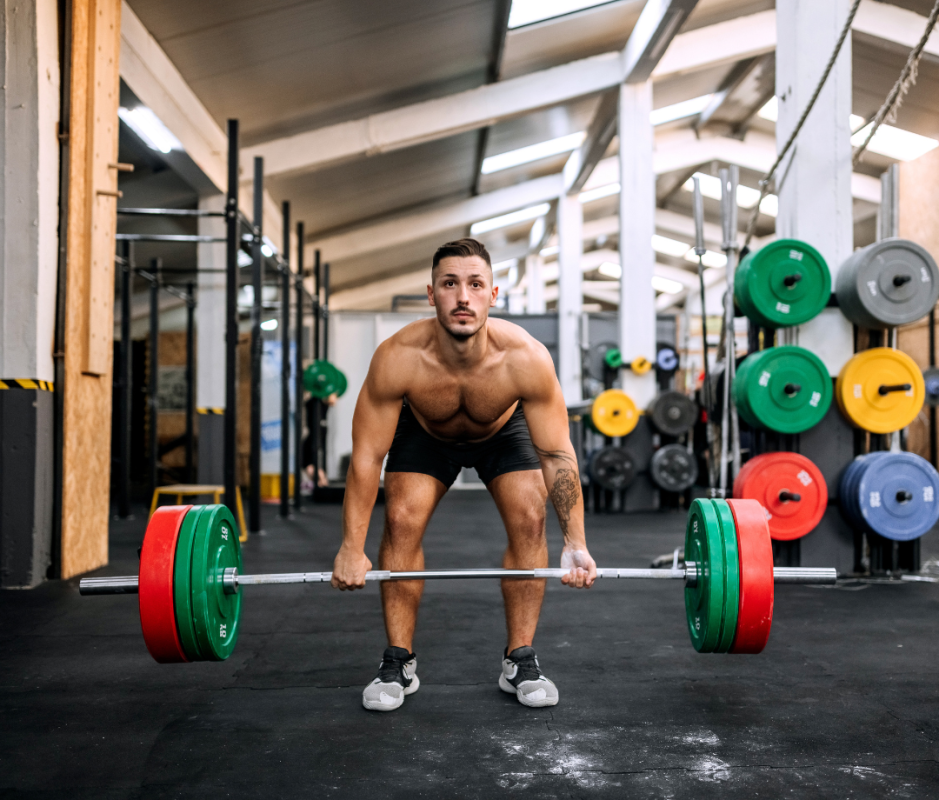
The Best Powerlifting Program for Beginners
While there are many good powerlifting resources online and in print, the classical powerlifting resource is Starting Strength, coach Mark Rippetoe’s no-nonsense guide to barbell weight training.
Here’s a similar approach that Collins uses for the first four to six weeks of getting an athlete started as a powerlifter.
How It Works
The program consists of three workouts a week. Each time you come to the gym, you'll increase the weight on your "big three" lifts. "Most novices can make tremendous progress with 1–1.5 hours of lifting, three movements, three times a week," Collins says.
It might not sound like much volume, but because powerlifting workouts emphasize big, compound movements that challenge both your musculature and your central nervous system.
A three-day-a-week program will pave the way for fast novice strength gains without over-taxing your system.
“We are looking to progress on a daily basis, so each time you come into the gym, you’re increasing in weight with each movement,” he says. “If you fail, or have two tough days or more, connect with your coach or take a step back.”
On day one, you’ll establish your benchmarks in the bench and squat. (Your deadlift starting point will extend from your squat benchmark.) Don’t stress if these numbers aren’t that impressive—it’s only ground zero, and you’ll get better soon.
Related: Considering the 75 Hard Challenge? Read This First
In other words, rather than establishing a maximum and working in percentages of that maximum, you’re establishing a comfort zone and building from that foundation.
From there, you’ll increase your weight each training session:
- Squat and deadlift: 10 pounds each day, and then by 5 pounds once it starts to feel challenging.
- Bench press and overhead press: 5 pounds each day, then by smaller increments once it starts to feel challenging.
“I like to start off with sets of eight reps,” Collins says. “I know it’s more typical of bodybuilding programming, but it provides a lot of practice with the movement, and allows the beginning powerlifter to build a base (and some muscle) to support sets of five that you’ll do later on.
Once you max out on your daily progression, or you start failing at a weight, de-load: Take 10 percent off your weight and work yourself back up.
That should give you enough time to push progress. After about two de-loads, it's time for a more intermediate program.
In all workouts, rest 3–5 minutes between sets.
Establish Your Benchmark Weights
Once you’ve warmed up on your first day (see below), do 10 reps of the squat and bench with an empty 45-pound barbell. From there, increase the weight each set by 5–25 pounds, depending on what’s comfortable.
Your goal is to ultimately arrive at a weight that you can lift for 8 reps, and confidently lift at least 3 more times if you need to. (Collins calls these “reps in reserve,” a variation on the concept of rate of perceived exertion, or RPE.)
Warmup
Perform three rounds of the following before you begin each workout.
- 10 air squats
- 10 good mornings
- 10 Romanian deadlifts
- 10 pushups
- 10 pullups (can scale down to ring rows if necessary)
- 15-20 seconds of hip stretching like clamshells
Day 1 (Monday)
1. Squat
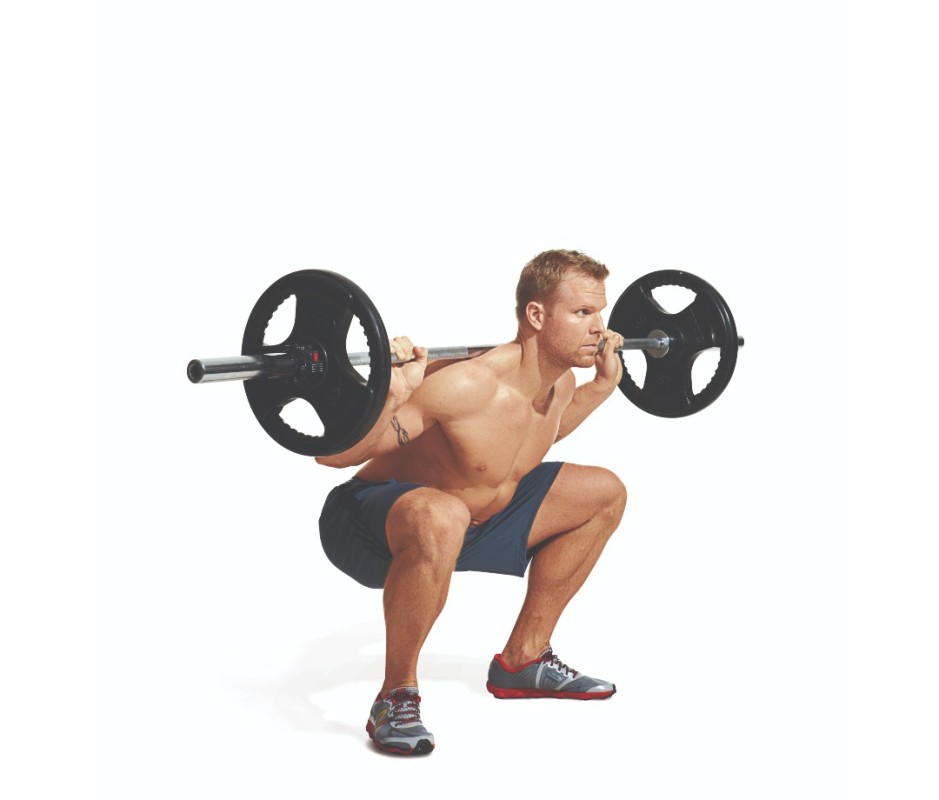
Beth Bischoff
How to Do It
- In a squat rack step under the barbell and place it high on your trap muscle across the top of your shoulders, to start.
- Place your hands a few inches outside shoulder-width to keep the bar stable.
- Step back and stand with your feet shoulder-width apart and toes turned slightly outward.
- Take a deep breath then bend your hips and knees to lower your body as if you were going to sit down in a chair.
- Aim for your butt to go lower than knee level while maintaining a tall, upright posture with your upper body.
- Extend your hips to come back up, continuing to push your knees outward.
- Perform 3 sets of 8 reps.
2. Bench Press
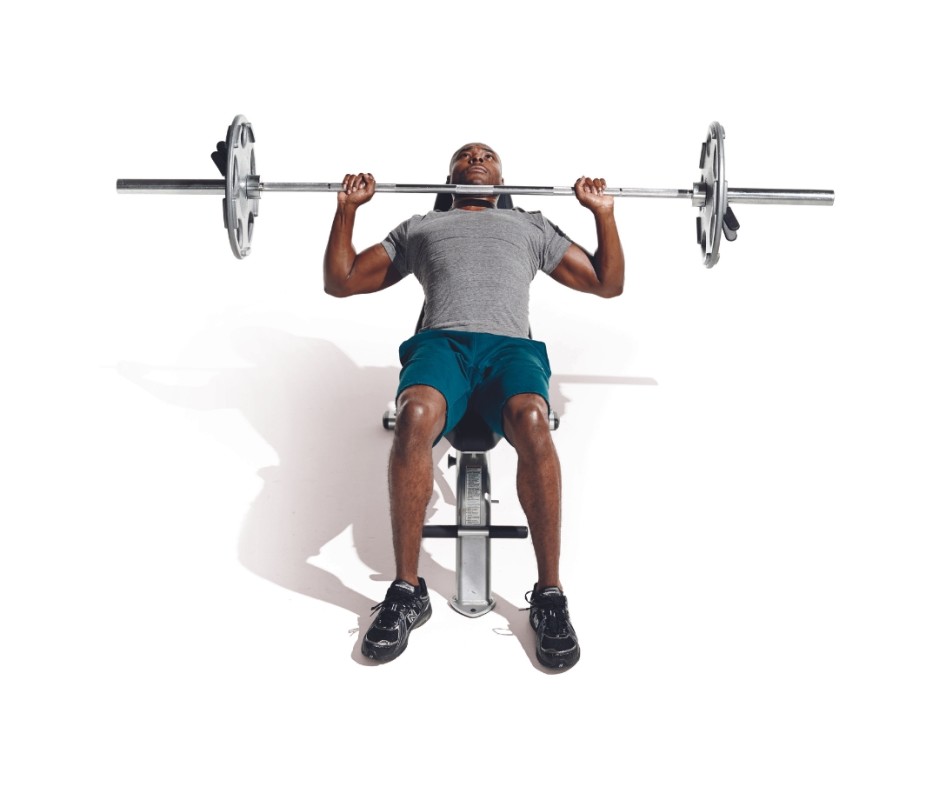
James Michelfelder and Therese Sommerseth
How to Do It
- Grasp the bar just outside shoulder-width and arch your back so there’s space between your lower back and the bench.
- Pull the bar out of the rack and lower it to your sternum, tucking your elbows about 45° to your sides.
- When the bar touches your body, drive your feet hard into the floor and press the bar back up.
- Perform 3 sets of 8 reps.
3. Bentover Row

Beth Bischoff
How to Do It
- Grasp the bar with an overhand grip at shoulder width and let it hang in front of your thighs, to start.
- Bend at the hips and lower your torso until it’s almost parallel to the floor.
- Squeeze your shoulder blades together and pull the bar to your belly.
- That's 1 rep.
4. Plank
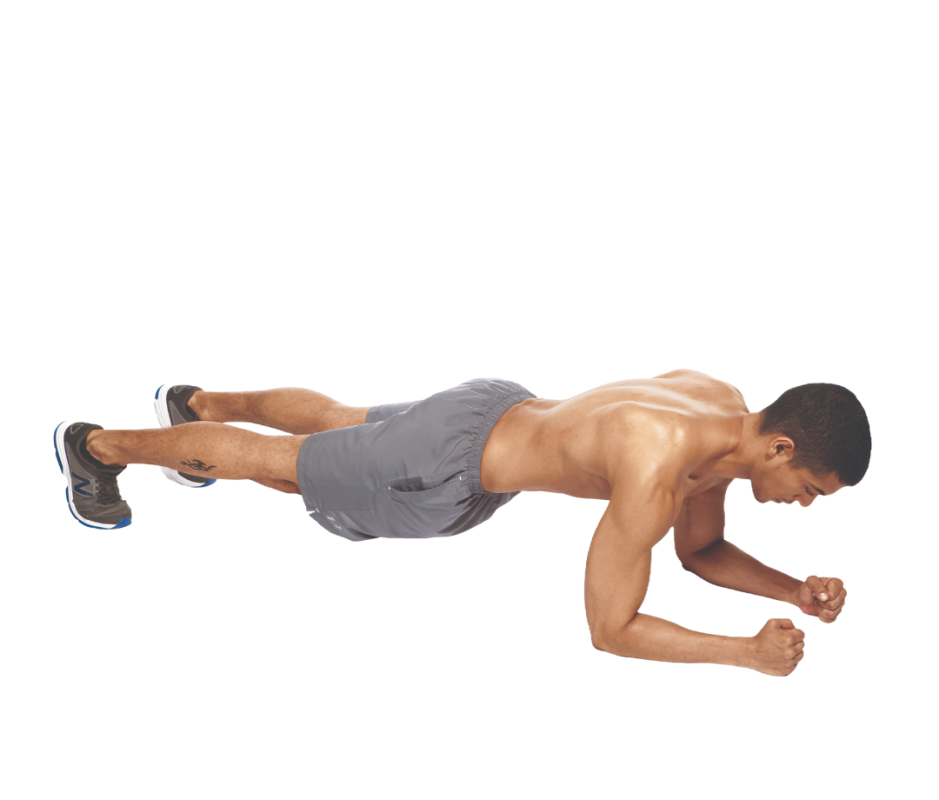
Beth Bishoff
How to Do It
- Get into pushup position and bend your elbows to lower your forearms to the floor, to start.
- Hold the position with abs braced for 3 rounds of maximum time possible.
Day 2 (Wednesday)
1. Squat

Beth Bischoff
How to Do It
- In a squat rack step under the barbell and place it high on your trap muscle across the top of your shoulders, to start.
- Place your hands a few inches outside shoulder-width to keep the bar stable.
- Step back and stand with your feet shoulder-width apart and toes turned slightly outward.
- Take a deep breath then bend your hips and knees to lower your body as if you were going to sit down in a chair.
- Aim for your butt to go lower than knee level while maintaining a tall, upright posture with your upper body.
- Extend your hips to come back up, continuing to push your knees outward.
- Perform 3 sets of 8 reps.
2. Overhead Press
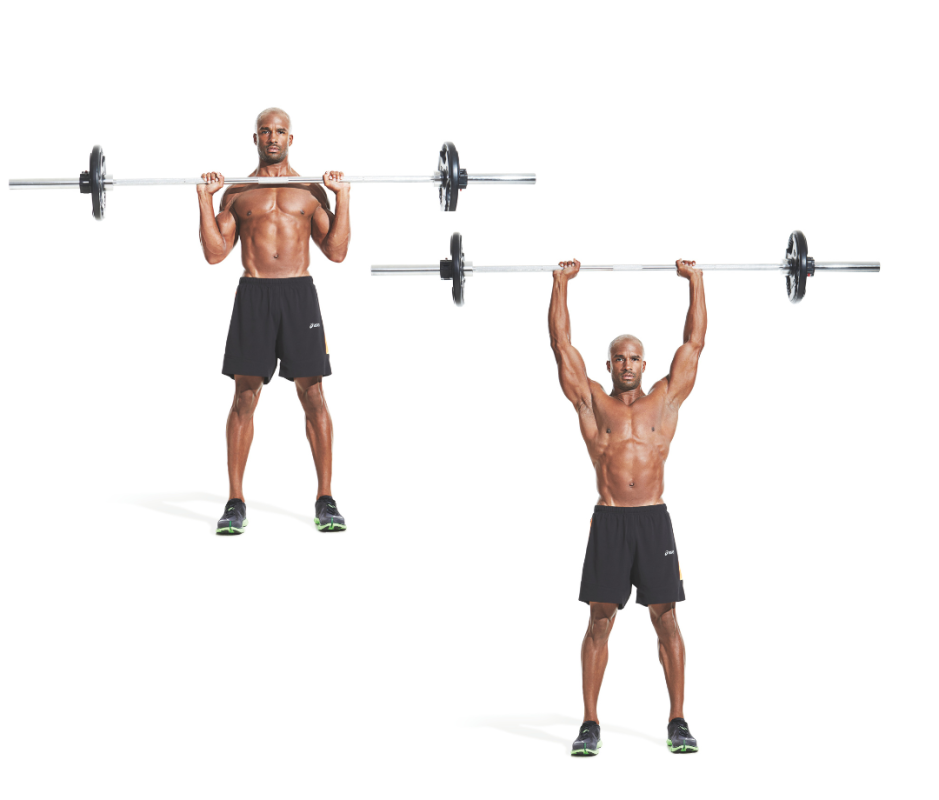
Beth Bischoff
How to Do It
- Set the bar up in a squat rack or cage, and grasp it just outside shoulder width.
- Take the bar off the rack and hold it at shoulder level with your forearms perpendicular to the floor.
- Squeeze the bar and brace your abs. Press the bar overhead, pushing your head forward and shrugging your traps as the bar passes your face.
- Lower the barbell to your collarbone with control.
- That’s 1 rep
- Perform 3 sets of 10 reps.
3. Romanian Deadlift
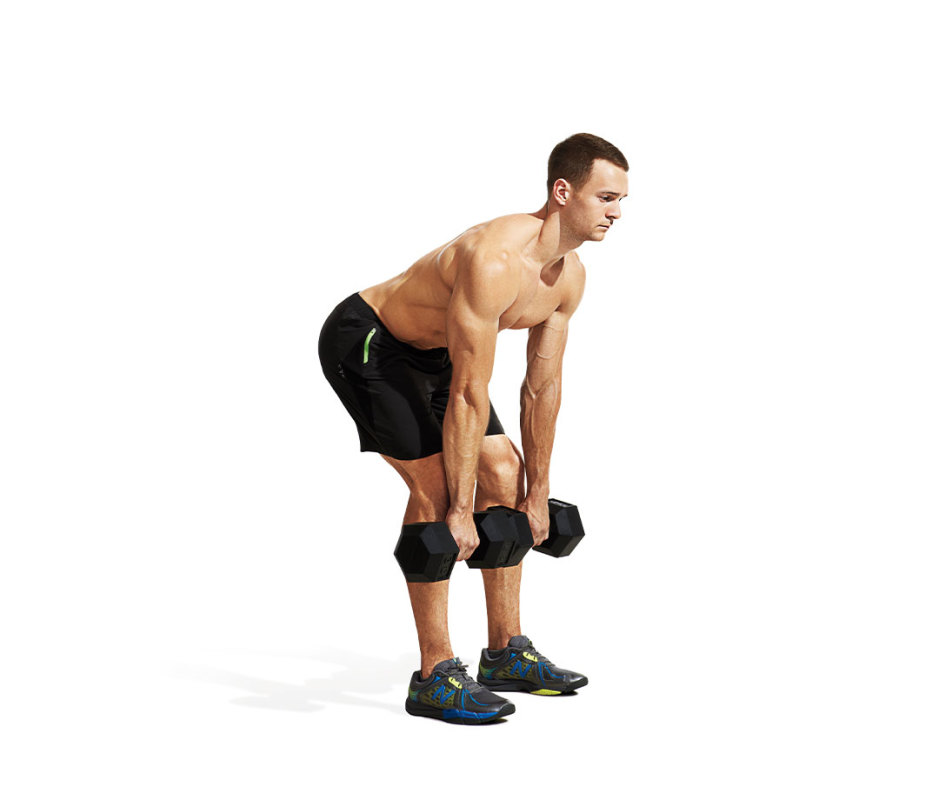
Beth Bischoff
How to Do It
- Stand holding a barbell with your hands just wider than shoulder-width, to start.
- Maintaining a flat back, hinge forward at the waist and lower the barbell, keeping it close to your shins.
- Return to the standing position by contracting your hamstring and glutes.
- Keep the bar close to your body throughout the movement.
- Perform 3 sets of 10 repetitions.
Day 3 (Saturday)
1. Squat

James Michelfelder
How to Do It
- In a squat rack step under the barbell and place it high on your trap muscle across the top of your shoulders, to start.
- Place your hands a few inches outside shoulder-width to keep the bar stable.
- Step back and stand with your feet shoulder-width apart and toes turned slightly outward.
- Take a deep breath then bend your hips and knees to lower your body as if you were going to sit down in a chair.
- Aim for your butt to go lower than knee level while maintaining a tall, upright posture with your upper body.
- Extend your hips to come back up, continuing to push your knees outward.
- Perform 3 sets of 8 reps.
2. Bench Press

Beth Bischoff
How to Do It
- Grasp the bar just outside shoulder-width and arch your back so there’s space between your lower back and the bench.
- Pull the bar out of the rack and lower it to your sternum, tucking your elbows about 45° to your sides.
- When the bar touches your body, drive your feet hard into the floor and press the bar back up.
- Perform 3 sets of 8 reps.
3. Deadlift
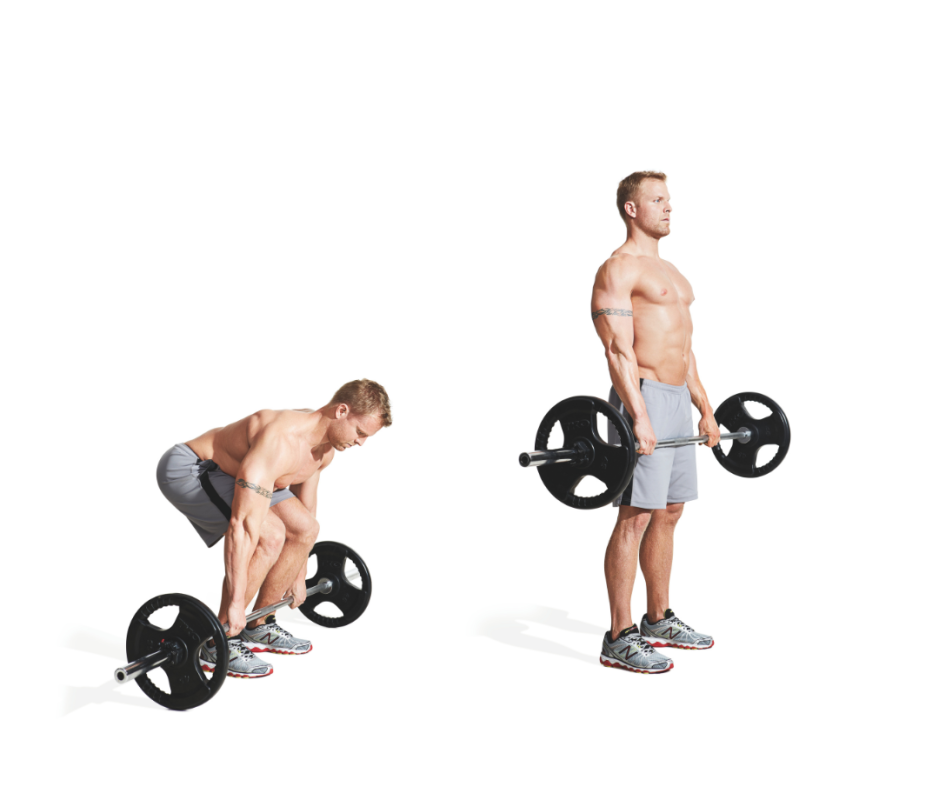
Beth Bischoff
How to Do It
- With a barbell in front of you, stand with your feet hip-width apart. Roll the barbell up to your shins, to start.
- Bend down to grasp it outside your knees.
- Keeping your lower back in its natural arch, push through your heels and extend your hips until you’re standing with the bar in front of your thighs.
- Make sure to keep the bar close to your body throughout the movement.
- Perform 2 sets of 5 reps.
4. Single-Arm Dumbbell Row

James Michelfelder
How to Do It
- Rest your right knee and right hand on a flat bench and grasp a dumbbell with your left hand, to start.
- Let the weight hang straight down.
- Retract your shoulder and row the dumbbell up and to your side. Squeeze your shoulder blades at the top and hold for one second.
- On the final two sets, choose a heavy weight and “cheat” it up, performing your reps explosively and with loose form.
- Complete all reps on one side, then switch.
- Perform 3 sets of 10 reps.
Related: How to Build Muscle Faster If You Want to Transform Your Physique
Benefits of Powerlifting
1. Strength Translates to Everything
“Strength is the most valuable investment you can make in your life,” Collins says. “No athlete ever said, ‘I lost this game because I was too strong.’ No one wants to make more trips to the car when they’re unloading groceries.”
2. You’ll Become Mentally Tougher
Just as endurance training ultimately becomes a mental battle against your lungs, powerlifting demands steely psychological composure—particularly because training often entails pushing to failure and then getting right back on the platform.
“The barbell teaches you discipline, sacrifice, how to power through a weight you thought impossible, and how to navigate the darkness of hitting a weight that you've never done before,” Collins says.
3. It’s Safe (When Done Correctly)
Under the eye of a good coach and with the right prep, powerlifting’s injury rate is far below that of sports like soccer or basketball.
It’s closer to tennis and volleyball, according to a widely cited 1994 study conducted in the U.K and published in the Journal of Strength and Conditioning Research. (Powerlifting has also been shown to decrease the risk of osteoporosis.)
4. It Rewards Longevity
Basketball players are “old” by the time they’re 30, and football players and soccer players peak in their 20s. Most powerlifters, on the other hand, will tell you they're at their strongest after years of trial and error repeating the same movements. So if you didn't start lifting in your tees, don't worry, you still have time.
5. Your Strength Will Translate
As with any pursuit from bodybuilding to basketball, progressing in powerlifting becomes progressively more difficult, requiring more effort and dedication as time goes on. And, as with anything worth doing, it takes time and focus.
“The road to 90% is relatively easy,” Collins says. “The road from 90 to 100 is hard as hell.” That, and “your friends seem to ask you for help a lot more often when they’re moving out of their apartments,” he says.
Related: 7 Reasons Why You’re Getting Weaker (And No, It’s Probably Not Your Genetics)
What You’ll Need to Start Powerlifting
1. A Good Gym
It sounds obvious, but choosing your gym is a key step. Sure, you can theoretically train for powerlifting in the average big-box gym. But if you’re serious about the sport, then training at a powerlifting-friendly gym—or at least one with a setup that allows you to take your time on the bench press and squat stations without getting dirty looks from the staff and other lifters—is ideal. Plus, the last thing you need when you're trying to lift as much weight as possible is a trainer or gym owner yelling at you for dropping the weight.
(Check out USA Powerlifting’s gym search tool to find one near you.) You’ll also be able to watch and learn from knowledgeable powerlifters and coaches.
If there aren’t any around, you can always inquire at your local CrossFit gym—some have separate powerlifting clubs that train independently of CrossFit classes. Otherwise, powerlifting doesn’t require too much gear of your own.
Related: How to Use Lifting Straps, a Powerlifter's Favorite Accessory
2. Specified Powerlifting Gear
Powerlifters often wear powerlifting-specific shoes that offer a solid, slightly raised heel to help lifters get into a better position underneath the barbell while still engaging their posterior chain. For deadlifting, go with a pair of simple shoes that don't have much of a heel or deadlifting slippers, since their thin rubber heels reduce a deadlifter’s range of motion and maximize the foot’s surface area with the floor.
Many powerlifters invest in specialized equipment like knee sleeves and lifting belts, but you can probably hold off on those until you seriously commit to powerlifting.
3. Invest in Chalk
Most powerlifting or CrossFit gyms will have chalk in just about every corner. But just in case, we suggest investing in your own that you can throw in your gym bag. Chalk "aids your grip when deadlifting and benching, and improves the tightness of your squat,” Collins says.
Related: Top Testosterone-Boosting Workout That's Scientifically Proven to Naturally Increase Levels
Common Powerlifting Mistakes to Avoid
1. Work Your Way Up
“Don't start off too heavy,” Collins says. “Most people get turned off because they experience failure very early on a novice program, and that's because they let their ego get in the way. Check your ego at the door, and make sure you educate yourself on form and basic methodology prior to getting under a barbell.”
2. Stay Disciplined
If you’re going to focus on powerlifting, then focus on powerlifting—don't also play basketball five days a week or sign up for a marathon while you're at it. Just as people training for an Ironman or the Mr. Olympia never stray far from their dedicated training plan, powerlifters focus on their training.
If you'd rather keep up a few different aspects of fitness, it might be smarter to incorporate the "big three" exercises into your existing training without dedicating yourself 100% to powerlifting.
Related: How Many Reps and Sets You Should Do for Every Training Goal
3. Distinguish Strain from Pain
Anyone who’s ever gutted through a 5x5 deadlift workout knows how draining it can be. But don't listen to ‘pain is weakness leaving the body.’ Pain is pain.
"It's a warning sign,” Collins says. “Do enough to progress, but don't overdo it for the sake of an Instagram post."
4. Do Reps the Right Way
Every gym in the universe has some guy who will insist that he can squat 500 pounds and then half-rep his way through the wimpiest range of motion imaginable. In case you haven't already guessed, this would never fly in a competition setting.
So, if you want to be a powerlifter you're going to have to learn correct form before you go for your first four-plate squat. Work your through a full range of motion as you’re starting, and then work your way up in weights. As far as powerlifting is concerned, Mr. Half-Rep is effectively Mr. No-Rep.
5. Work with a Knowledgeable Trainer
You wouldn’t ask a running coach to teach you a boxing form, right? Right. As a novice powerlifter, you’ll benefit immensely from having a USA Powerlifting-certified coach who can plan out your training and introduce you to the nuances of the discipline.


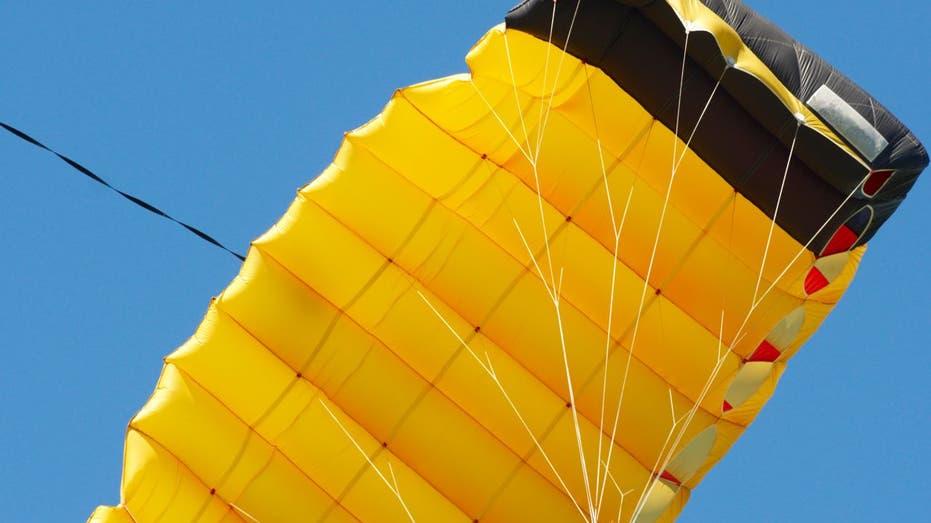






![[DEALS] iScanner App: Lifetime Subscription (79% off) & Other Deals Up To 98% Off – Offers End Soon!](https://www.javacodegeeks.com/wp-content/uploads/2012/12/jcg-logo.jpg)












